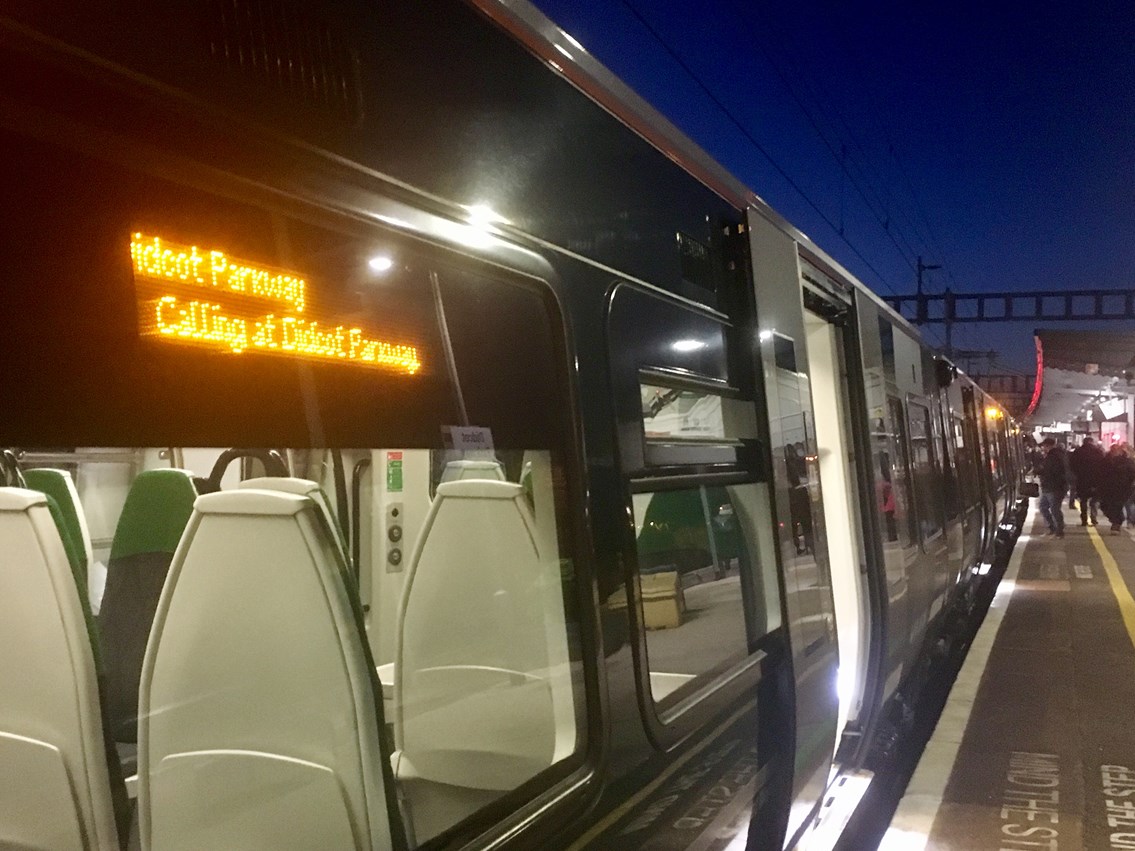Friday 29 Dec 2017
Electrification to Didcot delivered allowing new trains with more seats to come into service
- Region & Route:
- Wales & Western: Western
- | Wales & Western
Passengers in Berkshire and Oxfordshire will benefit from more seats and better journeys as Network Rail delivered electrification to Didcot on December 27 as part of their Railway Upgrade Plan.
Energisation of the Great Western mainline between Maidenhead and Didcot, which has been delivered early, means Great Western Railway will be able to run their new Electrostar trains from Didcot on 2 January. Along with the new Intercity Express Trains, they will provide an extra 4,800 seats into and out of London Paddington during the morning peak (between 0700 and 0959), a 10% increase compared to January 2017.
Electrification to Didcot was delivered earlier than the target date set of January 2018 as per the Hendy review in January 2016.
Network Rail had already delivered electrification from Paddington to Maidenhead in May 2017, increasing capacity in the Thames Valley.
Electrification of the mainline forms part of Network Rail’s £6 billion route modernisation programme which combines electrification, re-signalling and track and infrastructure improvements that together will ease congestion, reduce delays, improve reliability of the network, and increase the number of trains on the route.
It has already allowed GWR to run new and more modern trains through Bristol, Bath, Berkshire, Wiltshire and London in 2017 with further new trains arriving in Devon, Cornwall, Gloucestershire and Worcestershire in 2018 as they continue to deliver the biggest fleet upgrade in a generation.
Mark Langman, Western route managing director for Network Rail, said: “Electrification to Didcot is another major step forward in the biggest ever transformation on the Great Western Mainline as we deliver more trains, more seats and better journeys for communities across the route.
“This will boost local communities and provide a better service for passengers travelling in Didcot, Reading, across the Thames Valley and west London.
“It has been a real team effort as Network Rail and GWR staff worked tirelessly to get to this stage. It is an example of track and train working together for the benefit of the passenger and really does herald an exciting time on the railway.”
GWR Managing Director Mark Hopwood said “The 2 January marks a massive step towards delivering the capacity improvements we have promised, and the most significant series of improvements for rail passengers in a generation.
“Electric trains will run under the wires between Didcot and London for the first time, delivering real improvements for our passengers in London and the Thames Valley and enabling us to make further improvements throughout our network, supporting the communities we serve.
“Let me also take this opportunity to thank our passengers in advance for their patience during the Christmas period, as Network Rail continues Crossrail works, and its programme to modernise the Great Western.”
Contact information
Passengers / community members
Network Rail national helpline
03457 11 41 41
Latest travel advice
Please visit National Rail Enquiries
Journalists
Network Rail press office -Western route
MediaRelationsWestern@networkrail.co.uk
About Network Rail
We own, operate and develop Britain's railway infrastructure; that's 20,000 miles of track, 30,000 bridges, tunnels and viaducts and the thousands of signals, level crossings and stations. We run 20 of the UK's largest stations while all the others, over 2,500, are run by the country's train operating companies.
Usually, there are almost five million journeys made in the UK and over 600 freight trains run on the network. People depend on Britain's railway for their daily commute, to visit friends and loved ones and to get them home safe every day. Our role is to deliver a safe and reliable railway, so we carefully manage and deliver thousands of projects every year that form part of the multi-billion pound Railway Upgrade Plan, to grow and expand the nation's railway network to respond to the tremendous growth and demand the railway has experienced - a doubling of passenger journeys over the past 20 years.
Follow us on Twitter: @networkrail
Visit our online newsroom: www.networkrailmediacentre.co.uk

